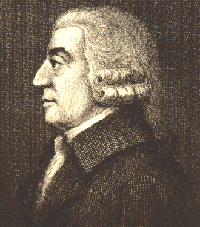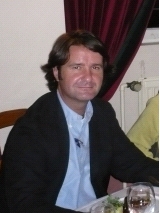If we all go for the blonde
This article is the winner of the general public category of the Plus new writers award 2008.
Suppose you are one of a number of boys hanging out at the school coffee bar. At the other side of the bar there is a group of beautiful girls, all but one of them brunette. The only blonde girl in the group is the one all the boys would first approach. Should you disregard what the other boys would do and try to talk to the blonde first? What if everyone goes for the blonde? If you are not sure about what to do, mathematics can show you the best way to proceed. This is what this note is about.

John Nash, March 2008.
This situation may be familiar to you. It is a version of a scene of the movie A beautiful mind (2001) with Russell Crowe playing the mathematician John Nash. As a graduate student at Princeton in 1950, Nash produced groundbreaking work in the mathematics of social interaction. This was the newly born field of game theory fathered by the legendary John von Neumann (1903-1957). Nash received the 1994 Nobel Prize in Economics for pioneering a revolutionary theory.
The situation at the bar is an example of a game: the boys are the players and the actions they may choose (either "go for the blonde" or "go for a brunette") are called strategies. Each boy has to decide what to do without knowing what the others will do. There exists obvious strategic interaction among the players. Game theory gives the players solid recommendations on their optimal strategy and provides an external observer with a prediction of the outcome of the interaction.
Regarding Smith
In the movie one character suggests that every boy should go it alone disregarding the others, recalling Adam Smith's (1723-1790) famous dictum "in competition, individual ambition serves the common good". This lesson of the father of modern economics suggests that it would be best for the group if all the boys go for the blonde girl.
After a flash of inspiration, Nash's character claims that Adam Smith's theory is in need of revision. The best collective result, he says, does not come from every individual following his own interest, but rather from every boy approaching a brunette. This would produce a better result for the group.
Completing the Nash/Crowe analysis

Adam Smith
Nash/Crowe reasons as follows: "If we all go for the blonde, we block each other and not a single one of us is going to get her. So then we go for her friends, but they will all give us the cold shoulder because nobody likes to be second choice. But what if no one goes to the blonde? We don't get in each other's way and we don't insult the other girls. That's the only way we win."
Nash/Crowe implicitly suggests here that aiming at a brunette is surely successful and that getting a brunette is better than getting no girl at all. It is also understood that anyone will get the blonde as long as he is the only one approaching her. Finally, Nash/Crowe assumes that if several guys approach the blonde simultaneously, they would end up getting no girl at all.
Let's complete the analysis and raise some key game-theoretic issues.
"No one for the blonde" is not the only way all guys win. Everyone also wins in any configuration of strategies "one (goes) for the blonde" (the others for a brunette). Furthermore, "one for the blonde" is better for the group than the Nash/Crowe proposal. "Better" means that no change of strategies can make someone better off without simultaneously making someone else worse off. This important property is known as Pareto optimality, after the Italian economist Vilfredo Pareto (1848-1923). Economists use Pareto optimality to evaluate overall wellbeing.
While "one for the blonde" is Pareto-optimal, the Nash/Crowe configuration is not, since anyone will be better off by switching to the blonde while the rest will not be worse off. So the "best for the group" promised by Nash/Crowe comes from strategic choices that differ from his proposed tactics.
Things turn more interesting now. What is a plausible expected outcome? Compare our two main candidates. "No one for the blonde" lacks self-interest consistency, since anyone would be better off by switching to the blonde provided that everybody else goes for a brunette. However, "one for the blonde" does not suffer from this inconsistency: no one can improve by deviating from his strategy. Indeed, either the guy going for the blonde or anyone aiming at a brunette would be worse off by changing their strategy unilaterally. Therefore this configuration is self-reinforcing. This is a Nash equilibrium solution, as proposed by Nash in 1950. It emerges as the natural prediction for a social situation, under the assumption that players are guided by their own interest.
So, here we go! The theory recommends that one and only one guy should approach the blonde girl. This is efficient both from a Pareto (social) perspective and from a Nash (individual) point of view. In turn, Smith takes the lead since "one for the blonde" is Pareto efficient (a best result for the group) and a Nash equilibrium (everyone doing the best for himself).
Is George Clooney around?

George Clooney
Good! Here you are! Here is the Nash-Pareto solution for your group: one of the guys chats up the blonde; the rest goes for a brunette. You know it and everyone else knows it. That's it. Are we done? Not quite. There are as many possible solutions as guys in your group.
So, who is the one that goes for the blonde? Well, here is a solution: watch your group for a second, is George Clooney there? In that case, he's the one getting the blonde.
Why? Well, it's obvious why: he's the ladies' man. This is more solid than it may seem at first. The solution "Clooney goes for the blonde" is what Thomas C. Schelling, 2005 Nobel Prize laureate in economics, called a focal point. A focal point is a Nash equilibrium that emerges spontaneously, in a self-evident way. No question about self-evidence in your Clooney case.
Chickens!
So far so good, except for one thing: Clooney could not make it and he's not at the bar today. So, suppose there is no one in the group to play the Clooney role. Furthermore, let's assume away any difference among suitors. There are no Clooneys but clones (maybe Clooney clones!). What then? We still have as many Nash equilibria as buddies but no focal point now. Psychology enters the scene. Everyone agrees that the compromise solution is "no one for the blonde". But this is not a Nash equilibrium, so everyone is tempted to change his strategy and go for the blonde. Now here comes the drama. If everyone switches to the blonde, the final outcome is the worst possible one: no girl for anyone.
This way the game turns into an N-player version of Chicken, a prototype model for conflict used by Bertrand Russell (1872-1970) as a parable for the nuclear puzzle in the cold war era. Chicken sharply exhibits the dangerous tension between individual self-interest and collective well-being in situations where the forces among contenders are similar. In the absence of a strong suitor, individual ambition may lead to the common bad! Adam Smith is revisited again. Now the Nash/Crowe analysis strikes back!
To go or not to go for the blonde?

Come on then, boys!
We have not learnt much, you may think. You don't have a clear-cut indication on how to play the bar game. Well, not really. Sound arguments recommend different strategies for a menu of scenarios. Now help yourself and choose the one that suits you best. Game theory usually works because people are trained by their social environments to behave according to rules corresponding to Nash-Schelling focal points. In the absence of a focal point, simple interaction mechanisms like that of Chicken make social situations less predictable. In the presence of many Nash equilibria decision making entails a dilemma and the interactive outcome involves a serious risk of social catastrophe.
Game theory is all about social situations. They are typically not black and white. As objects of scientific enquiry, human beings are complex realities. When interacting with others, complexity mounts up. Predicting the behaviour of our group at the bar may be vastly more complex than predicting the trajectory of a satellite. That is why the mathematisation of social sciences took so long and why game theory is so revolutionary.
Surely by now you have clues to play the bar game depending on your own group's features. Do your preferences match Nash/Crowe analysis? Is there a Clooney inside the group? Are you all alike?
In the movie scene, it is apparent that the blonde can't take her eyes off Nash/Crowe. So, here we have a focal point lesson after all: in any Hollywood movie game, the leading man takes the girl!
About the author

José-Manuel Rey obtained his PhD in mathematics in Madrid. He spent a postdoctoral year at St. Andrews University and University College London and is now Associate Professor in the Faculty of Economics at the Universidad Complutense in Madrid. He promotes practicing mediterranean game theory by socialising outdoors while tasting wine and tapas cooked with olive oil. He would probably not go for the blonde.
José-Manuel would like to thank C. Carrera for helpful comments on language style when preparing this article.
Plus does not endorse the stereotyping of women, or chickens for that matter, whatever their hair colour.
Plus would like to thank the London Mathematical Society and the Maths, Stats and Operational Research Network, as well as the journal Nature for their kind support of this competition. |
 |